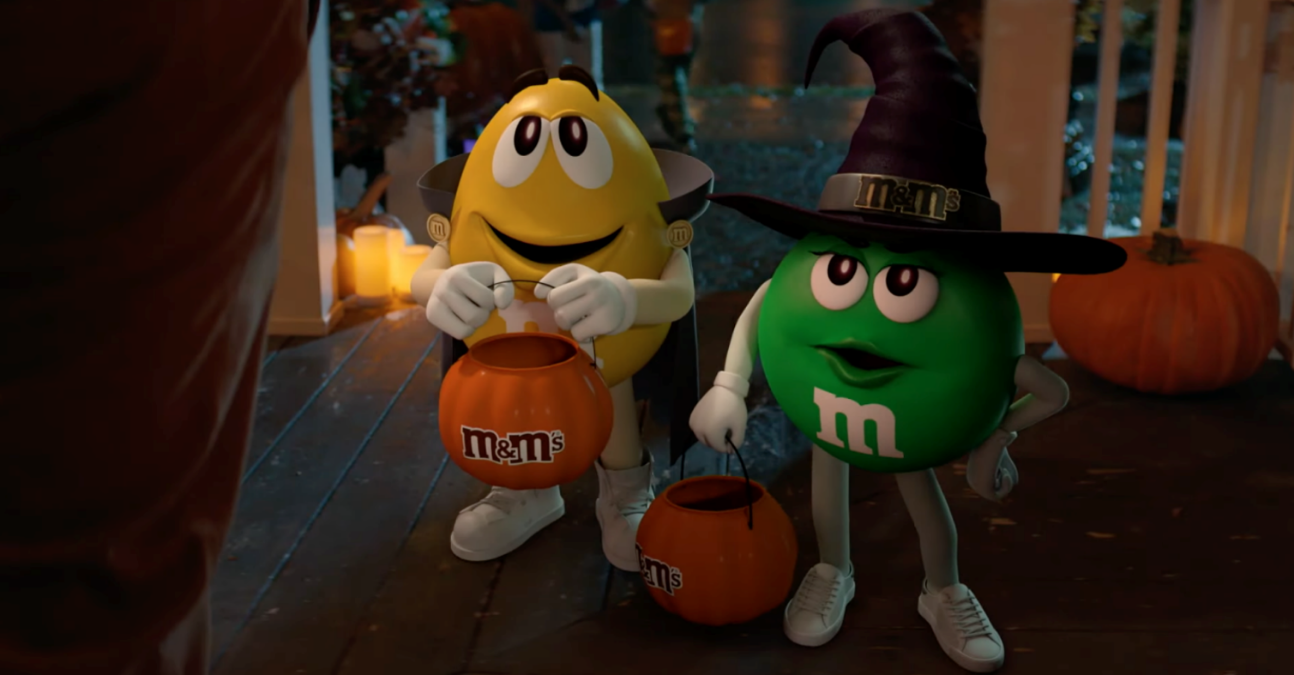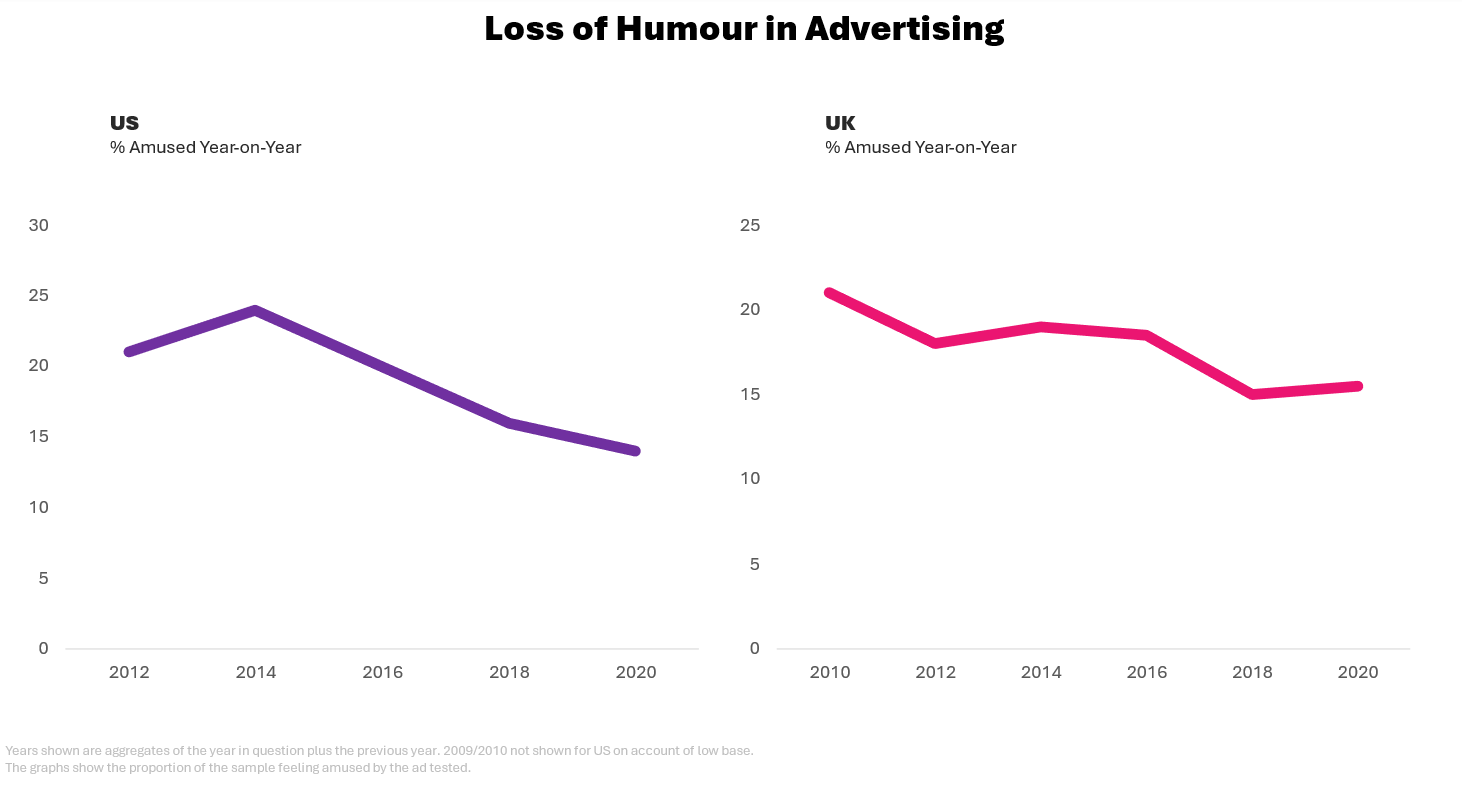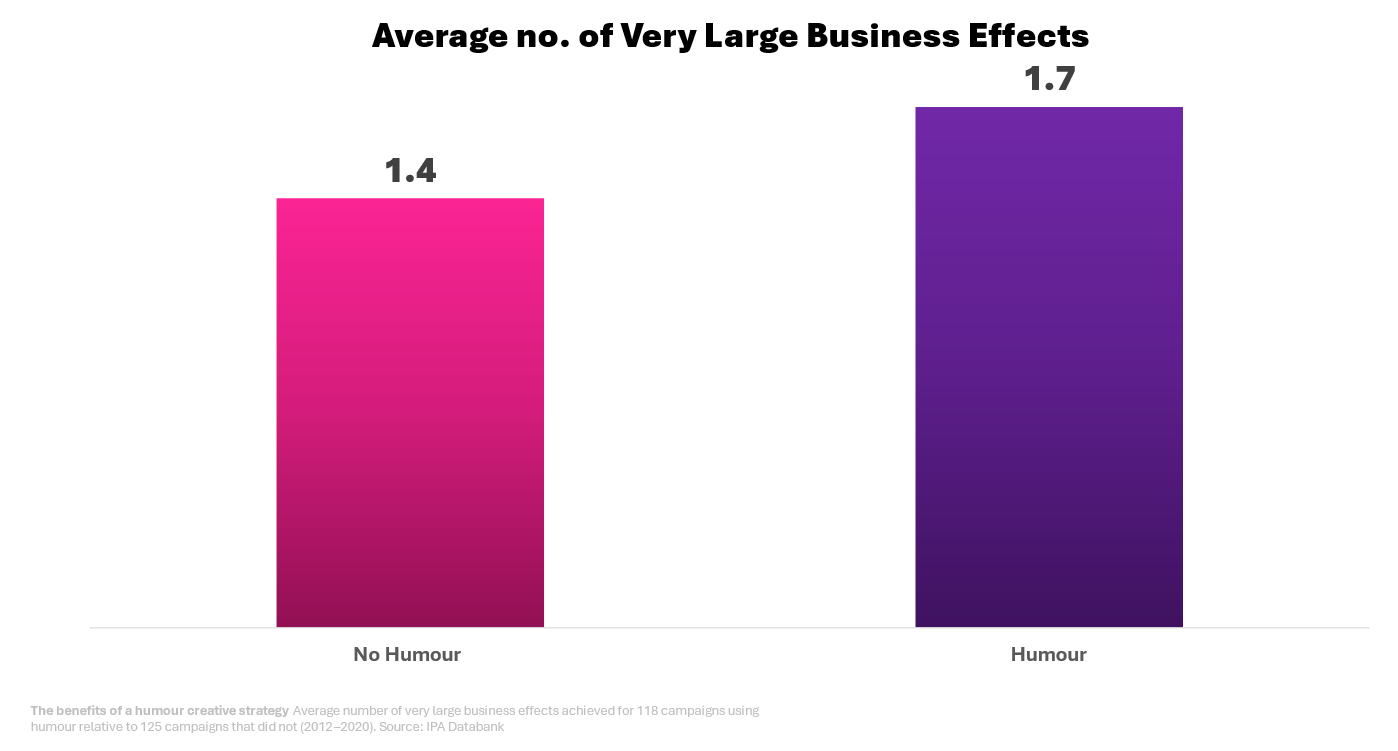Crafting the Perfect Spooky Spot at Halloween
Halloween isn’t just a spooky spectacle, it’s a sugar-fueled sales phenomenon. In the US alone, consumers spent an estimated $3.5 billion on Halloween candy in 2024, while UK shoppers pushed their spend to around £1 billion. That’s enough sweetness to make even the steeliest marketer’s head spin!
With 79% of Americans getting involved in Halloween celebrations, the holiday delivers a mass audience moment. According to the National Retail Federation (NRF), total seasonal spending across candy, costumes, and décor is projected to hit $13.1 billion this year, an astonishing figure for such a short window of consumer activity.
For brands, that means one thing: standing out in the candy aisle (and beyond) is crucial. The competition is fierce, attention spans are short, and the opportunities are fleeting.
To help you make the most of this sugar rush, we’re unwrapping key insights, strategies, and success stories from brands already crushing it in the confectionery category, showing how to turn Halloween hype into long-term sweet success!
No Sugar-Coating the Stats
Before we dive into best practices for sweet and confectionery brands hoping to land a place in consumers’ Halloween buckets this season, let’s unwrap the reality: this is one of the most competitive categories year-round.
In the US, the average Star Rating for the category is 3.8, which is 1.5 Stars higher than the national average, while UK candy ads come in even higher at 4.0 Stars. In both markets, the category shows strong short-term sales potential, based on data from System1’s premium ad database.
Long story short: in a category that’s already inherently appealing, brands need to do more than simply show glossy product shots at key moments of the year. To win, you need to be distinctive, and that’s exactly where many brands are falling short.
Before we indulge you with recommendations, here’s what these metrics really mean:
- Star Rating: System1’s measure of long-term brand-building potential or your ad’s likely impact on future market share. Think of it as the everlasting gobstopper of advertising, the investment that keeps paying off long after the campaign ends.
- Spike Rating: This is your “sugar rush” score, capturing the immediate, short-term sales impact of your ad. Spike Rating combines emotional intensity with speed of branding, meaning how strongly people feel when they watch your ad and how quickly they recognize it’s from you.
- Fluency Rating: Fluency measures how memorable and distinctive your ad is, expressed as the percentage of viewers who correctly recall your brand afterward. In the candy category, this is crucial, because there’s no point delivering long-term sweetness or a short-term sugar hit if audiences forget who you are by the end.
To put this into perspective, let’s look at data from the past year in the US candy category, where Halloween advertising is among the highest peaks of the year. Brands and advertisers don’t wait until October 31 to get spooky. The season starts in August and September, as brands remind shoppers to start stocking up early on sweet treats. Category advertising typically peaks just below Christmas and Valentine’s Day, two other major moments when consumers are most likely to indulge.
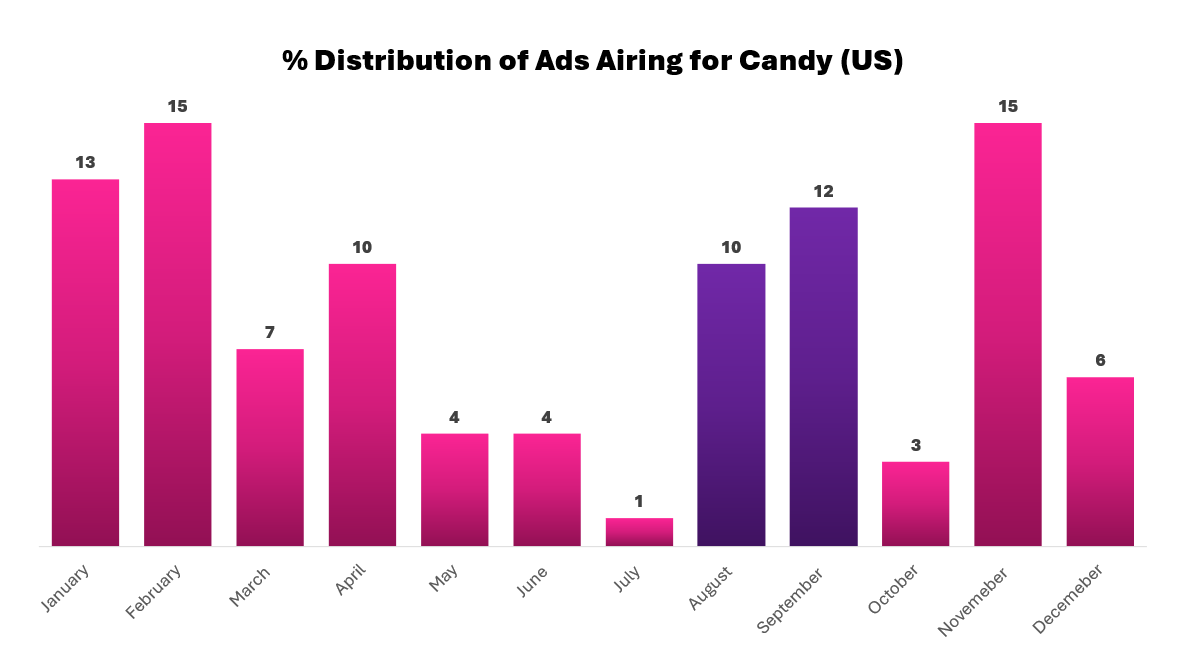
During these two months, however, category Fluency, or brand memorability, sits at just 86%, while the average Star Rating surges to 4.6 Stars, well above the category average. At this time of year, brands are serving up their most indulgent creatives, packed with rich product imagery designed to tempt even the saltiest consumer’s sweet tooth.
But there is a trick hiding in all that treat. With 15% of audiences misattributing ads to the wrong brand, marketers risk seeing their Halloween spots fade into the background, losing emotional connection not just to their own brand but sometimes even boosting a competitor instead.
Boo! That is a wake-up call for brands and advertisers, a real ad spend horror story. Because no matter how mouthwatering your product looks, great creative alone will not pull you to the top of the candy bag. To truly stand out, you need to be strategic.
Strike Fear into the Competition with a Fluent Device!
A surefire way to make sure consumers remember and buy your brand during busy seasonal periods is to invest in a consistent fluent device. This can be a character, a jingle, or even a recurring scenario that links your creative work together. It acts as the red thread that ties your storytelling across campaigns and seasons.
The work of Orlando Wood, in his books Lemon and Look out, highlights the long-term business impact of fluent devices. Our own research using data from the IPA reinforces this, showing the commercial power of consistency over a five-year period.
Not only do fluent devices improve brand recall, but the more consistent a brand is, the greater its emotional engagement and Star Rating tend to grow year after year. In short, fluent devices help ensure your brand is remembered for all the right reasons, long after the candy wrappers have been thrown away.
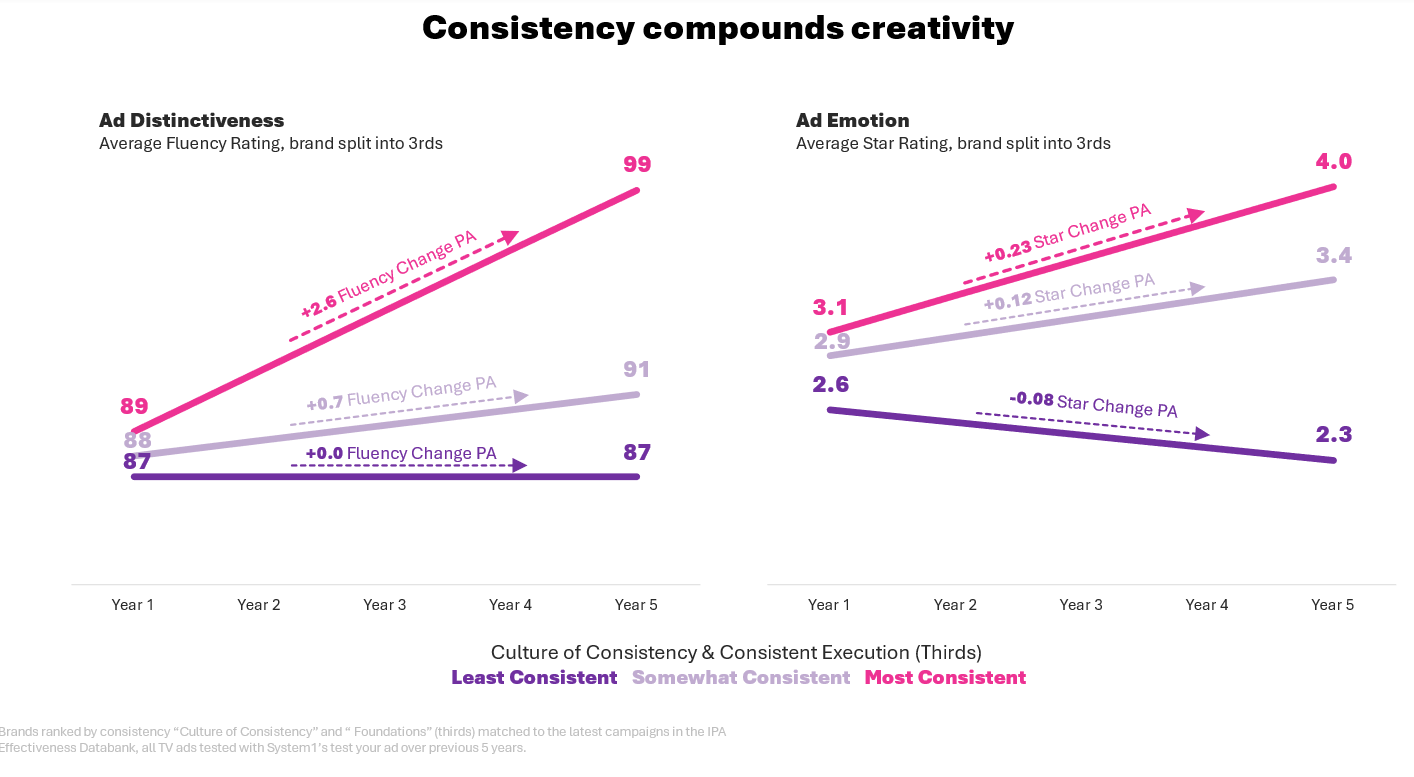
Few brands execute this strategy better than M&M’s, who have been leveraging their distinctive brand characters since the 1990s. These colorful personalities have done more than entertain; they have driven exceptional brand fluency, with the brand’s latest digital Halloween spot achieving 93% brand recognition in just two seconds.
Over the decades, these characters have become beloved household names, embodying the power of consistency and emotion in creative branding. The campaign even outperformed the US social average by 2.7 Stars, proving just how effective fluent devices can be in sparking emotional connection and memorability.
This spot is so good, I could eat it. Now that sounds like the start of an M&M horror story…
But M&Ms aren’t the only ones with scary good consistency tactics. Haribo also deserve some Kubrick-worthy kudos for their global commitment to creativity. Their “adults with kids’ voices” concept has run for more than 21 years, spanning countries, seasons, and countless scenarios.
This fluent device has become synonymous with the Haribo brand, proving the power of a simple, distinctive idea executed with unwavering consistency. Their latest French Halloween ad earned an exceptional 96% brand recognition, along with strong long- and short-term commercial impact.
U-Rated Horror Humor
One of the most important things for brands to remember at this time of year, especially within the confectionery category, is that they are advertising for everyone. Halloween, particularly in the US, is a mass-market moment. Lean too heavily into fear or negative emotions and you risk turning audiences away. Focus too much on product or functional cues and you disappear into a sea of sameness. Position yourself only as a brand for children or families and you risk losing the adults who find their own fun in this horror holiday.
One of the most distinctive and least divisive tools a brand can add to its creative toolkit is humor. Think of the cheeky humor M&M’s employ, with playful innuendos that sail over children’s heads but give a knowing wink to adults. The punchline may miss younger viewers, but the animated chocolates with quirky voices still make them laugh. This balance makes M&M’s memorable for their tongue-in-cheek wit.
That is no coincidence. They stand out because they are among the few brands that use humor, and use it effectively and consistently. Humor is a declining device in modern advertising, yet for brands looking to reach broad audiences, especially during competitive moments like Halloween, it is one of the most powerful ways to connect.
So, if you want your brand to stay top of mind long after the trick-or-treating ends, consider adding a touch of wit, satire, or playful exaggeration to your next campaign. You do not have to, of course, but if you do not, we might just start haunting your marketing plans like Freddy Krueger. Consider yourself warned.
Or take the Snickers twerking zombie from 2024, which combines adult humor, a relatable setting, and characters interacting in a way that feels authentic and fun. Ads that use humor are naturally designed to reach broader audiences, because they rely on richer storytelling. They often feature distinct characters, dialogue, a clear sense of place, and an unfolding narrative that keeps viewers engaged.
These are what Orlando Wood refers to as “right-brained features,” creative elements that capture broad, instinctive attention and spark emotional engagement. Humor connects all of these features, turning simple ideas into powerful, memorable stories that cut through crowded categories and drive real commercial impact.
Create with Confidence
So, there you have it. Two simple tips to prove that Halloween advertising doesn’t have to be scary after all. Chocolate and confectionery may seem like intimidating categories to crack, but brands that leverage consistency, strong brand characters, and humor are showing how to break through the seasonal clutter with style.
For many marketers, humor can feel like a risk. Will it land? Will it offend? Does it make sense for our brand? The good news is, you don’t have to rely on gut instinct alone. You can test your creative ideas before you go live using System1’s Test Your Ad platform.
Our methodology is predictive, actionable, and fast, helping brands make confident creative decisions and avoid sleepless nights filled with advertising nightmares. We’re here to help you create with confidence, so get in touch with the team today and make sure your next campaign is a real treat.

